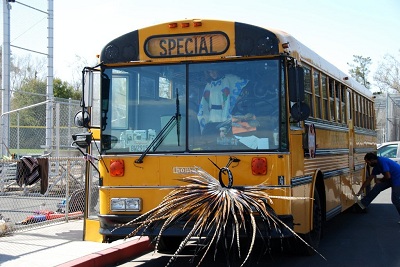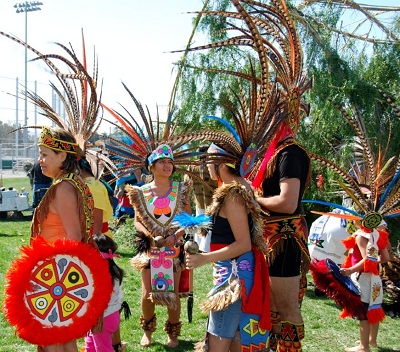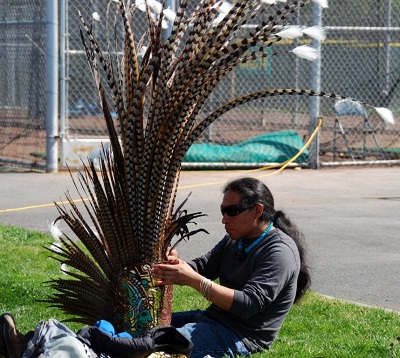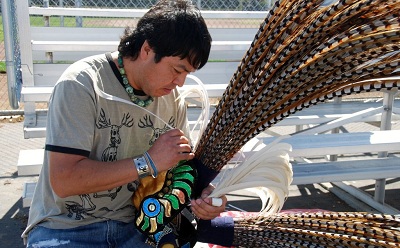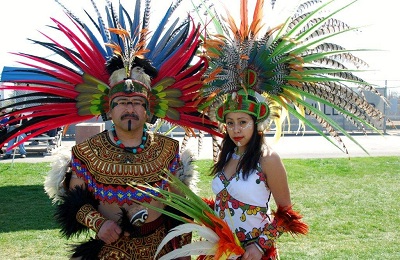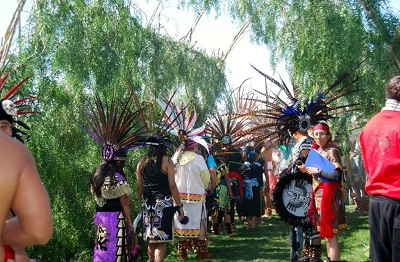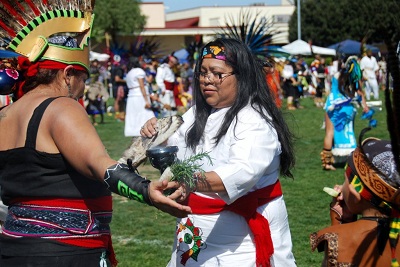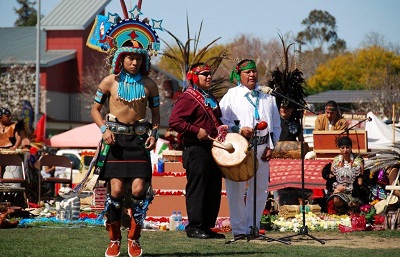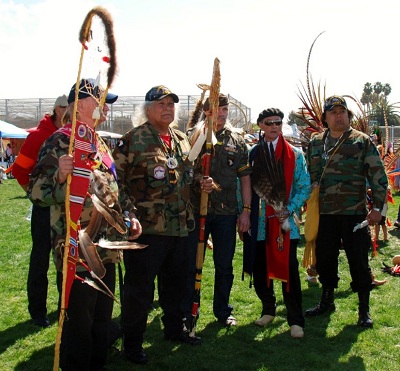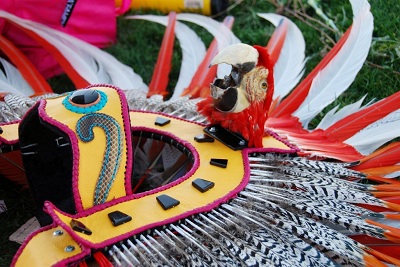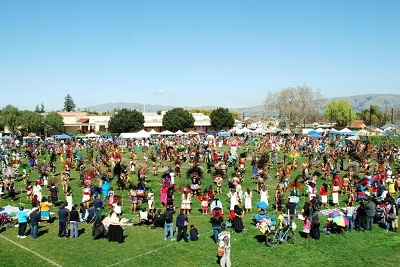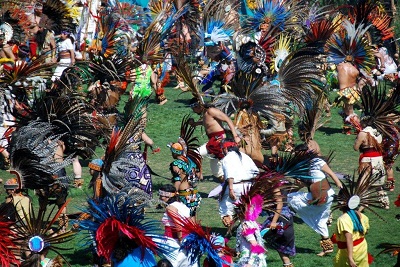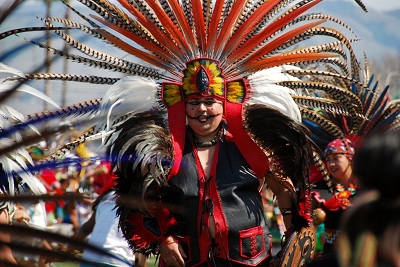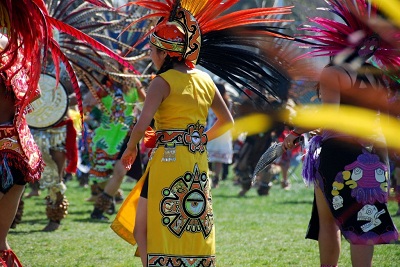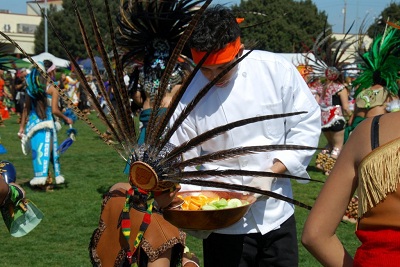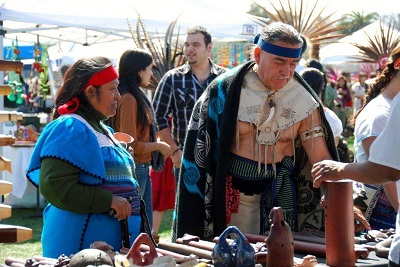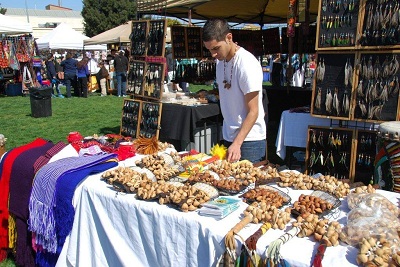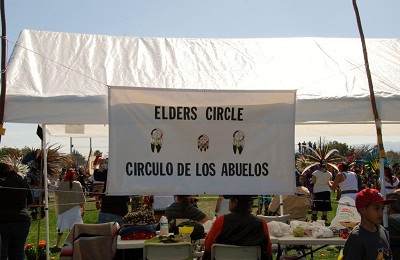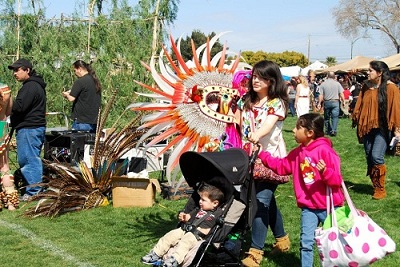This website uses cookies so that we can provide you with the best user experience possible. Cookie information is stored in your browser and performs functions such as recognising you when you return to our website and helping our team to understand which sections of the website you find most interesting and useful.
Calpulli Tonalehqueh's annual Mexica New Year celebration in San Jose. Photo by Enrique Romero, courtesy of the organization.

Calpulli Tonalehqueh
Aztec arts and culture
Calpulli Tonalehqueh is an Aztec dance and cultural diffusion group based in San Jose. Their name means “community of guardians who accompany the sun” in the Náhuatl language. Their mission is to create spaces for, facilitate the practice of, and promote community health through indigenous Mexican culture. As a nonprofit and volunteer-run collaborative, they organize ceremonial dance events, art, and music workshops, agricultural initiatives, educational summits, pan-indigenous exchange, and community outreach/activism. Through these efforts, Capulli Tonalehqueh hopes to promote and sustain cultural, physical, and spiritual well-being.
Living Cultures Grant Program
In 2023, 2017, 2015, 2014 and 2012, Capulli Tonlehqueh received a grant from ACTA’s Living Cultures Grants Program to support their annual Azteca Mexica New Year Ceremony in San Jose. A month of programming – which includes opportunities to learn more about Aztec dance and the Náhuatl language, as well as formal educational sessions with elders on such topics as calendar systems, nutrition, spirituality, cultural pride, ancient architecture, traditional attire, and music – will culminate in a weekend-long gathering. An estimated 10,000 people attend this free event, which targets the Mexican, Mexican-American, and indigenous communities in particular. In 2023, funding will also support their annual Día de Los Muertos celebration and the Un-Thanksgiving Sunrise Ceremony.

